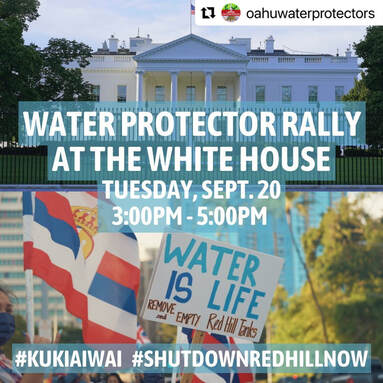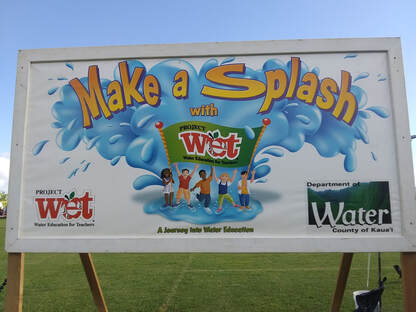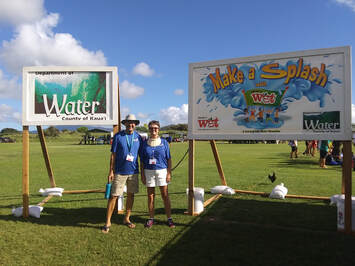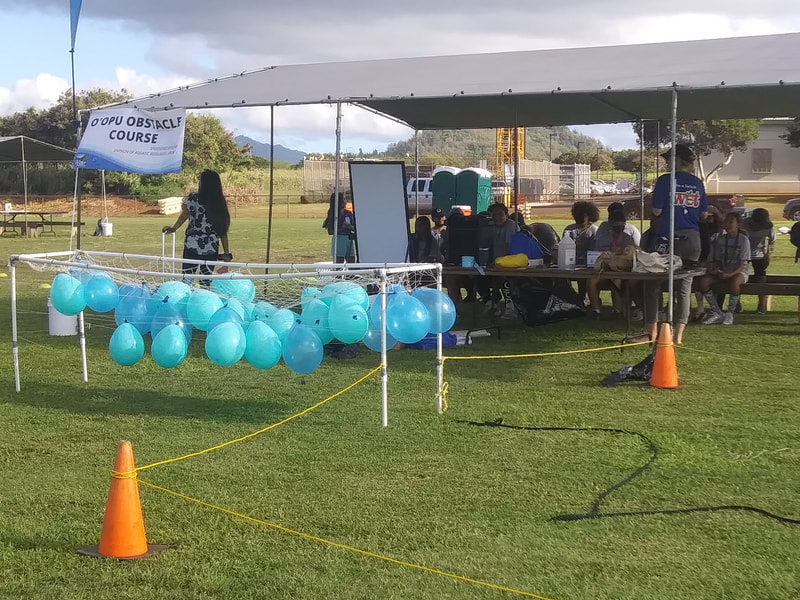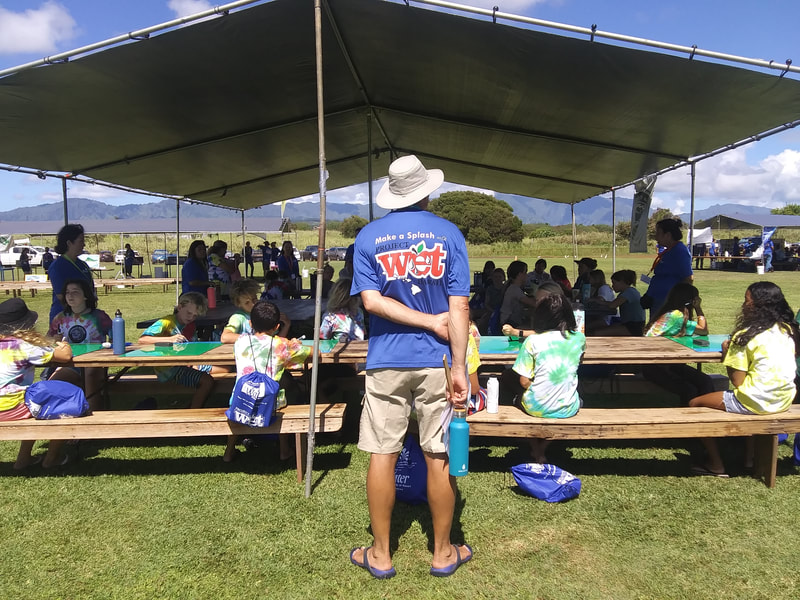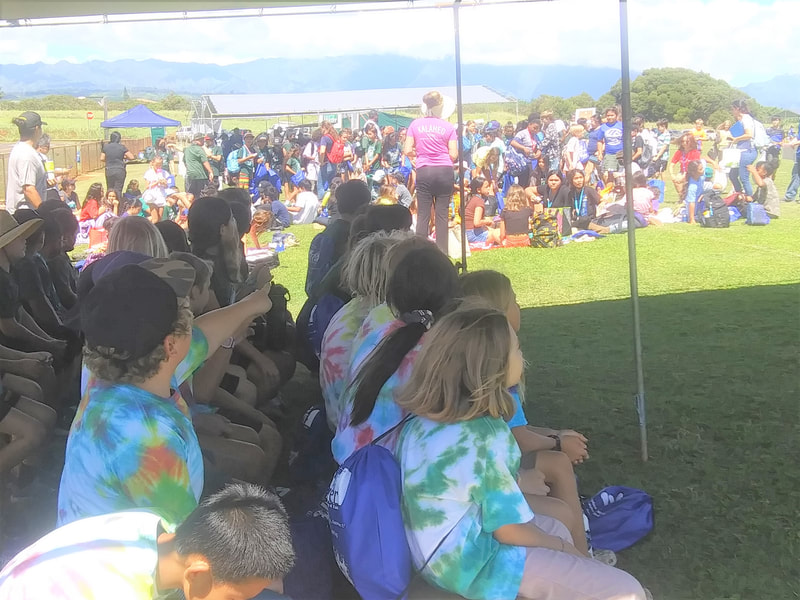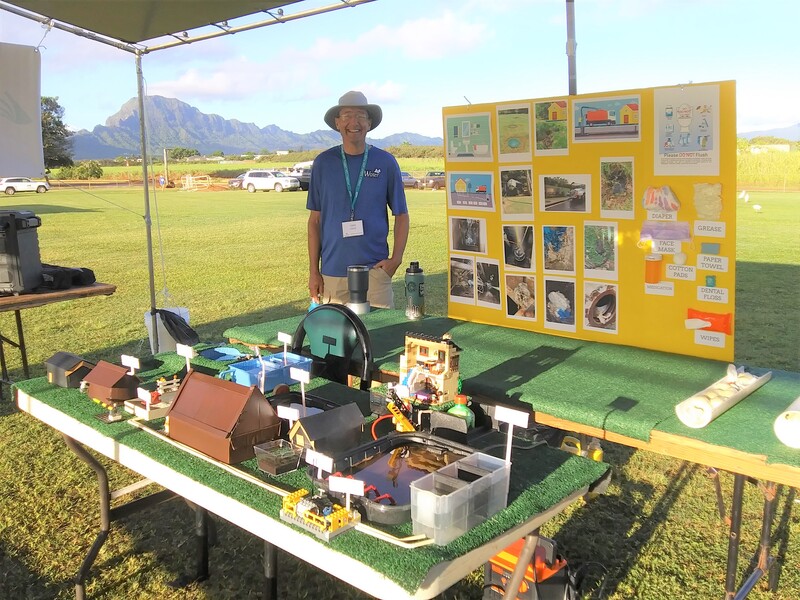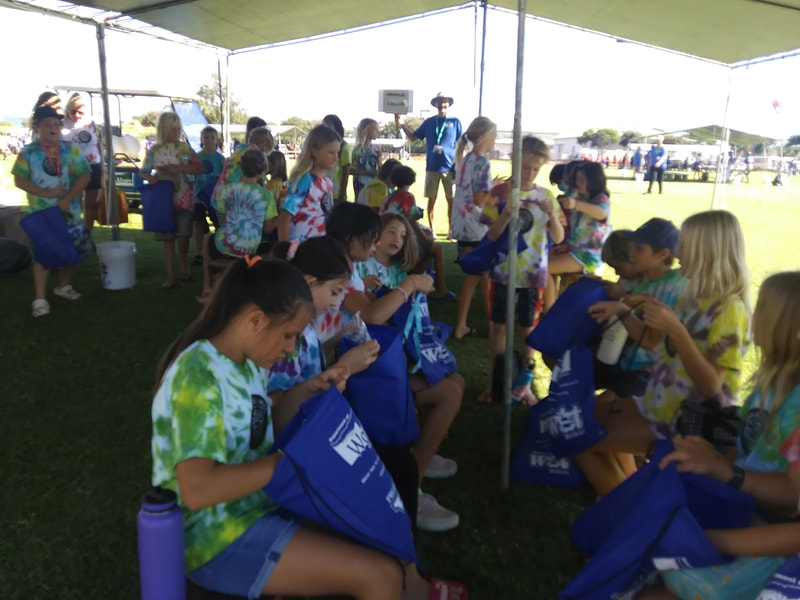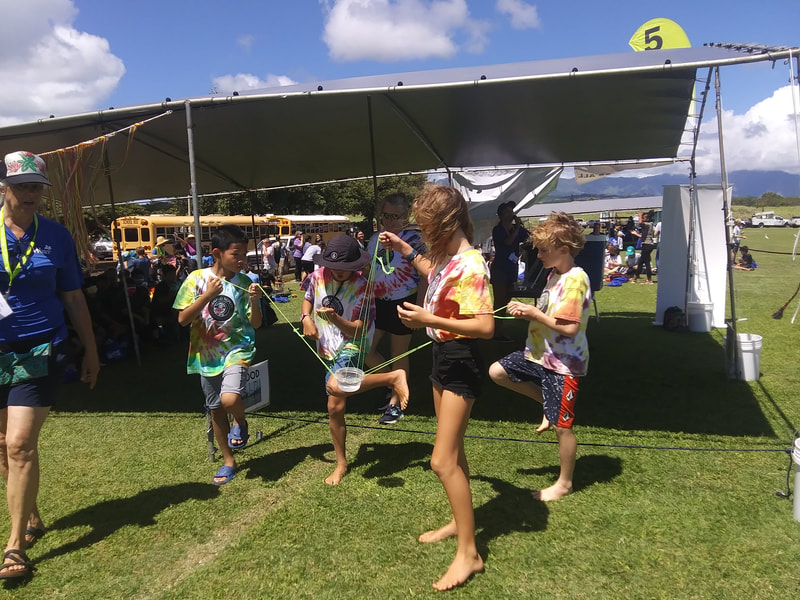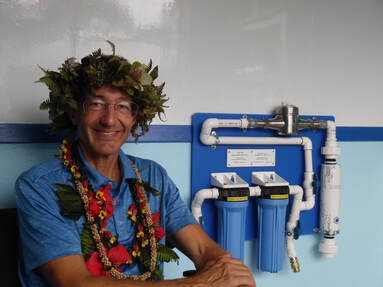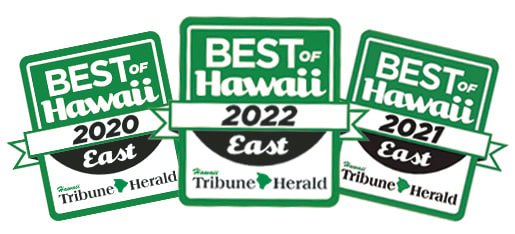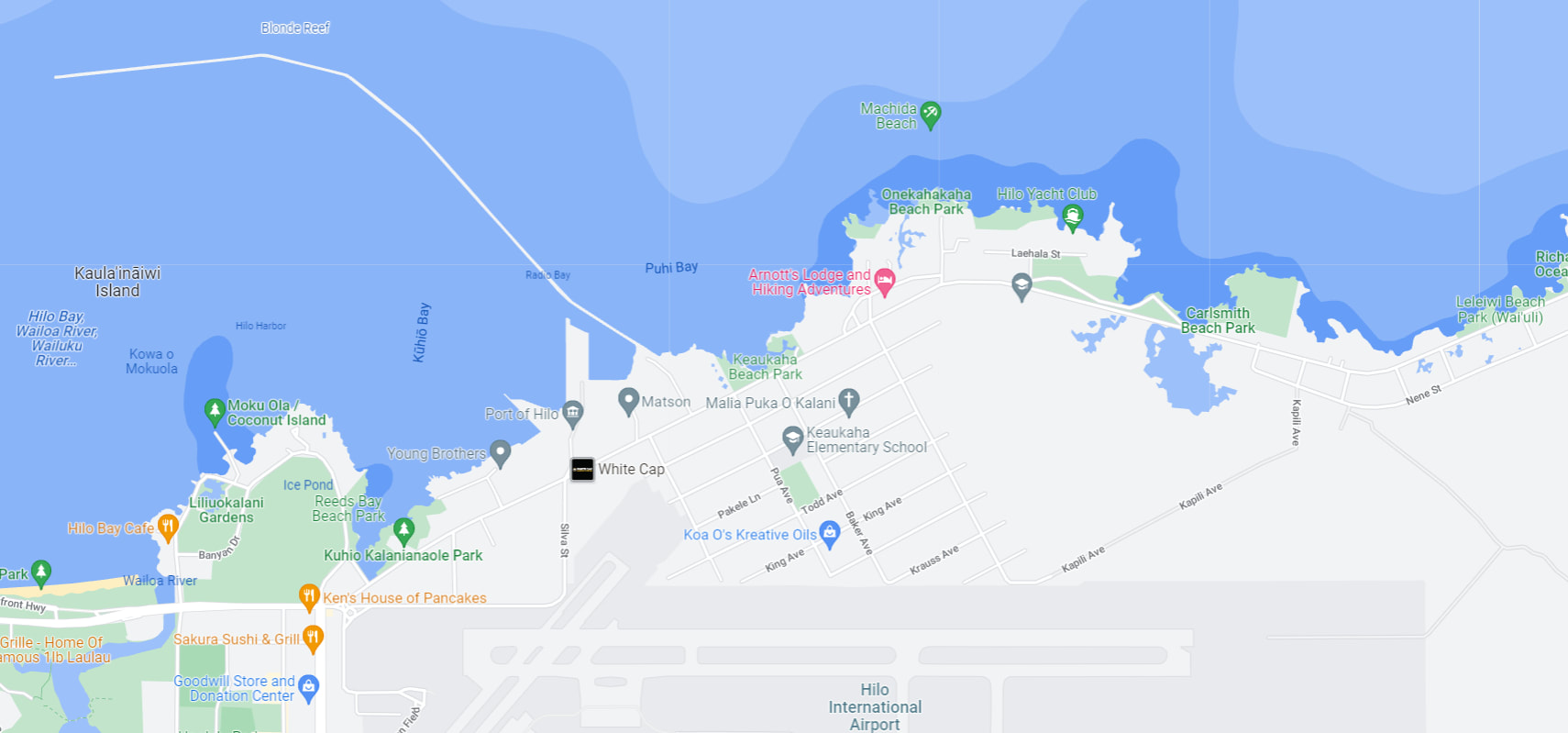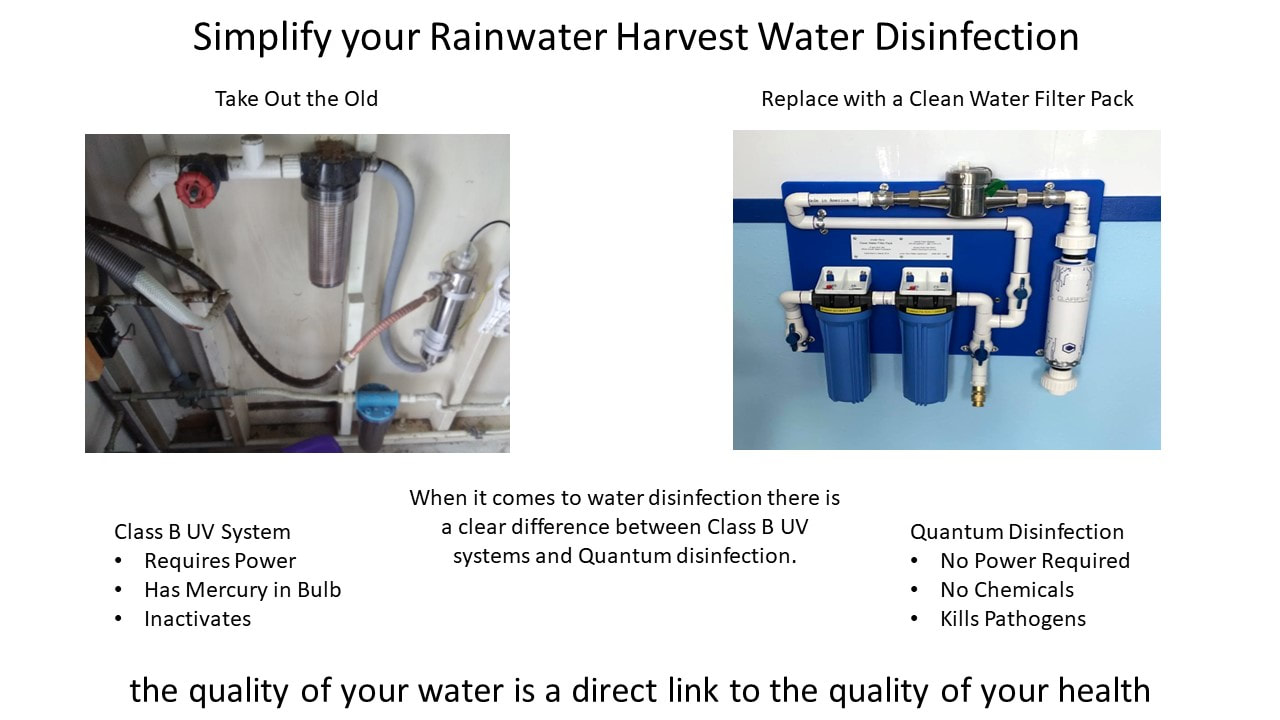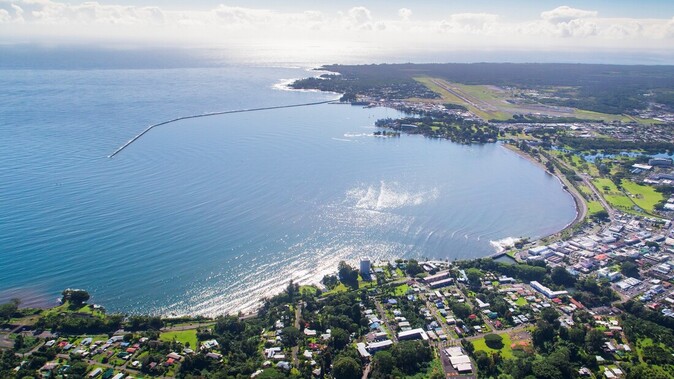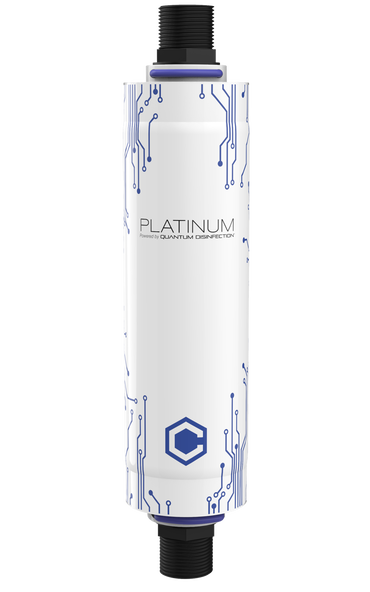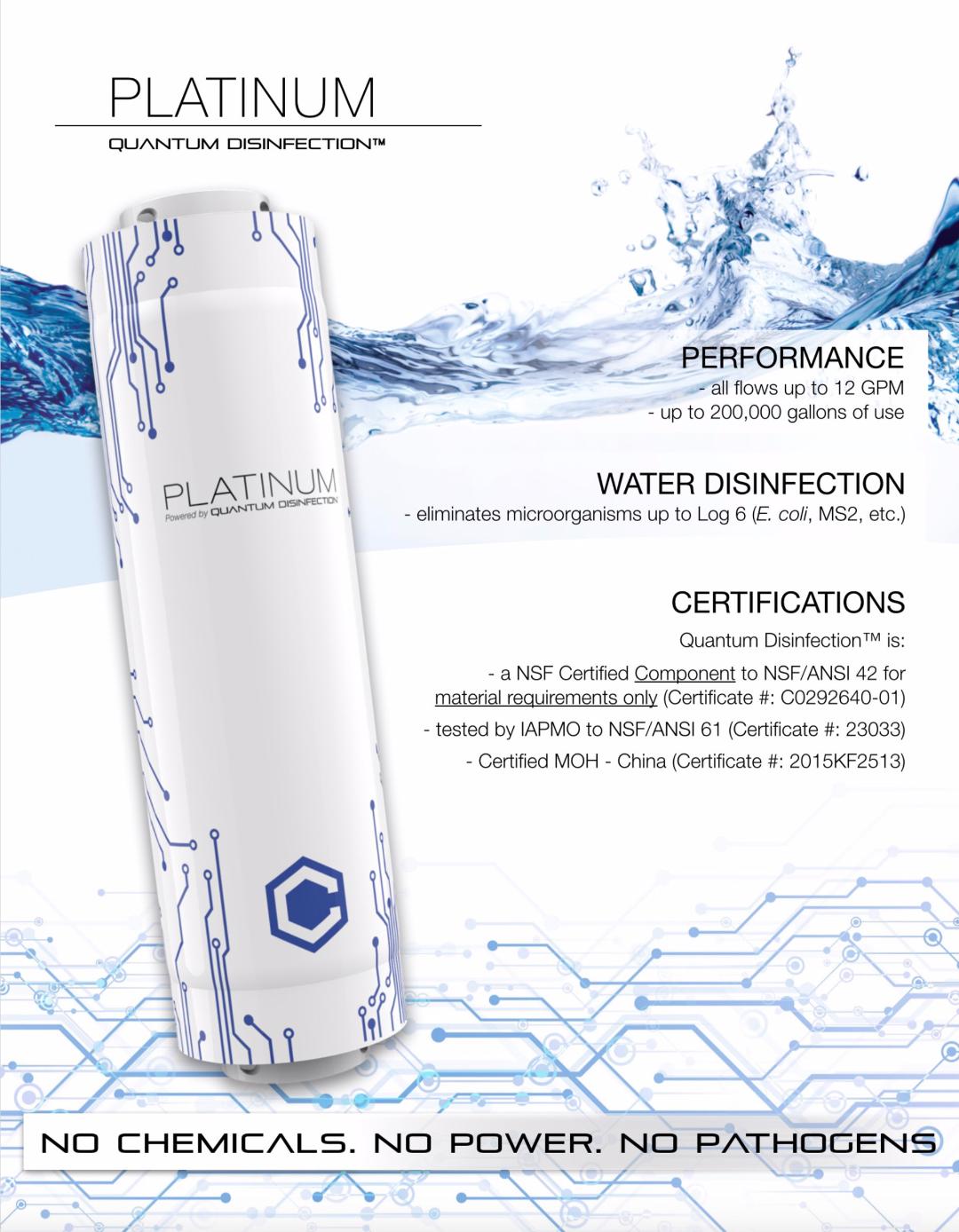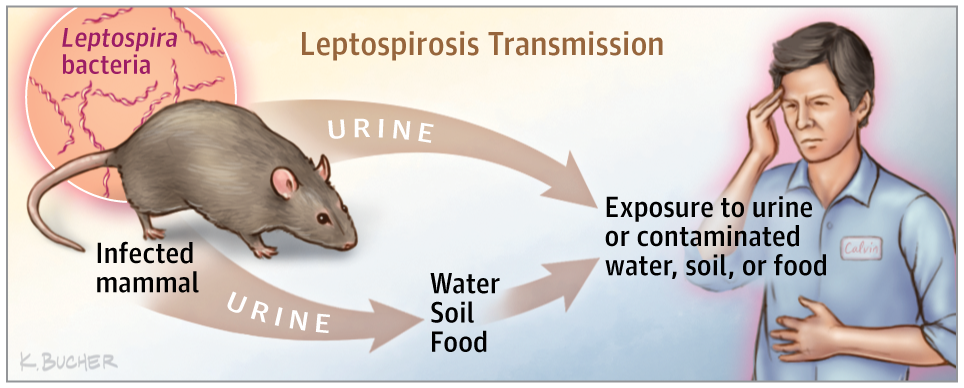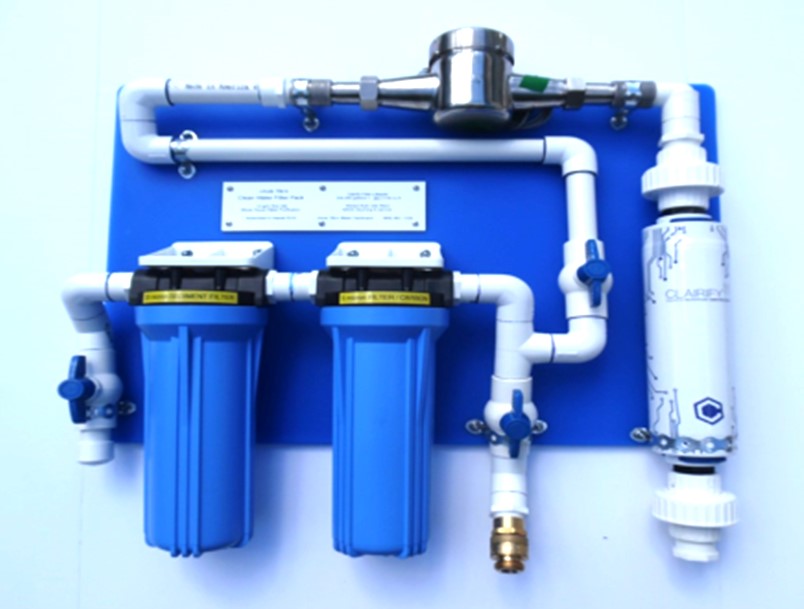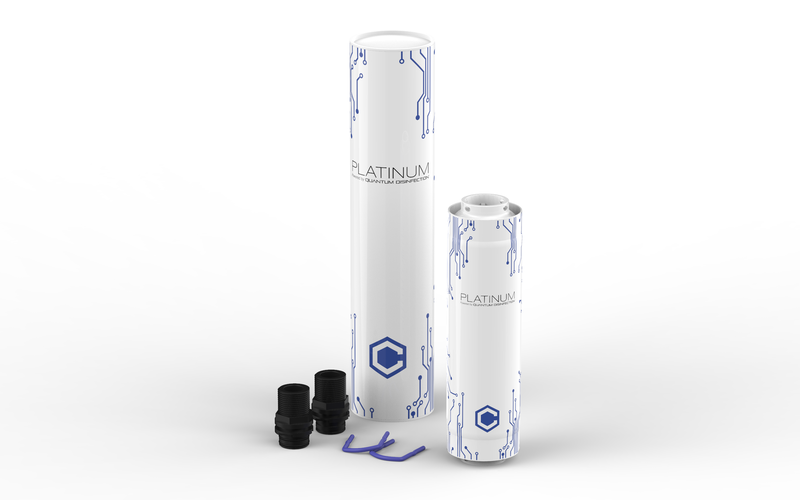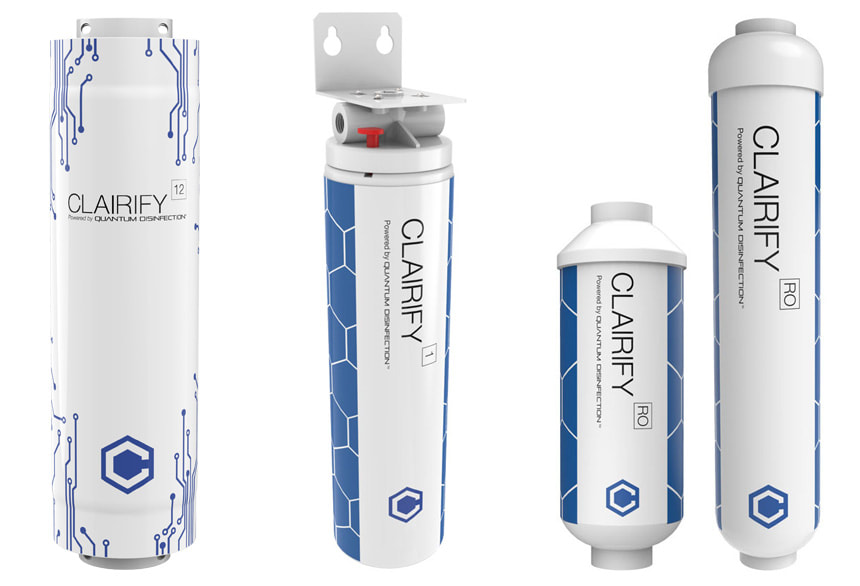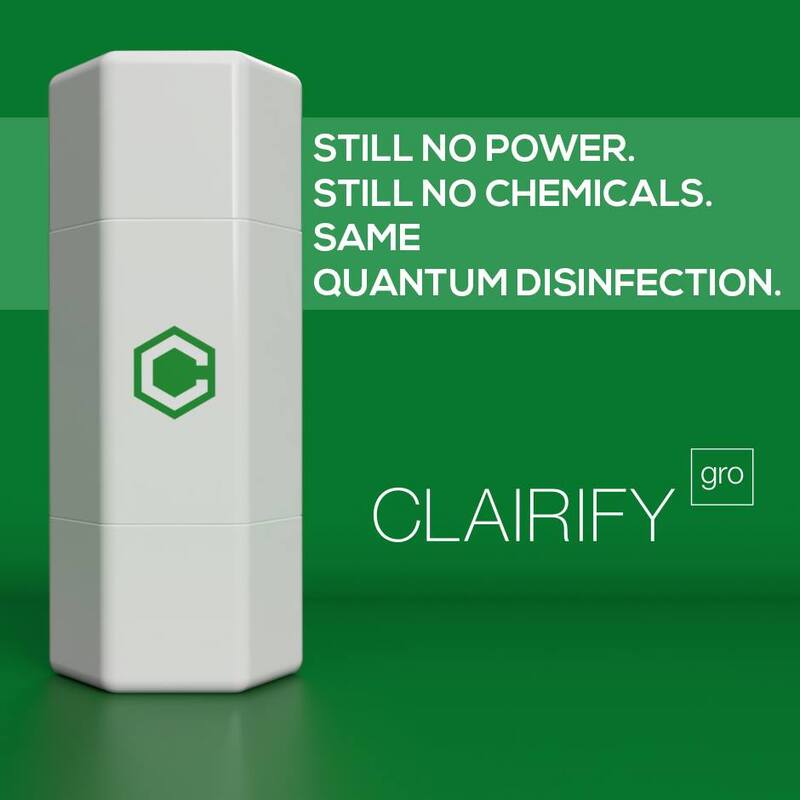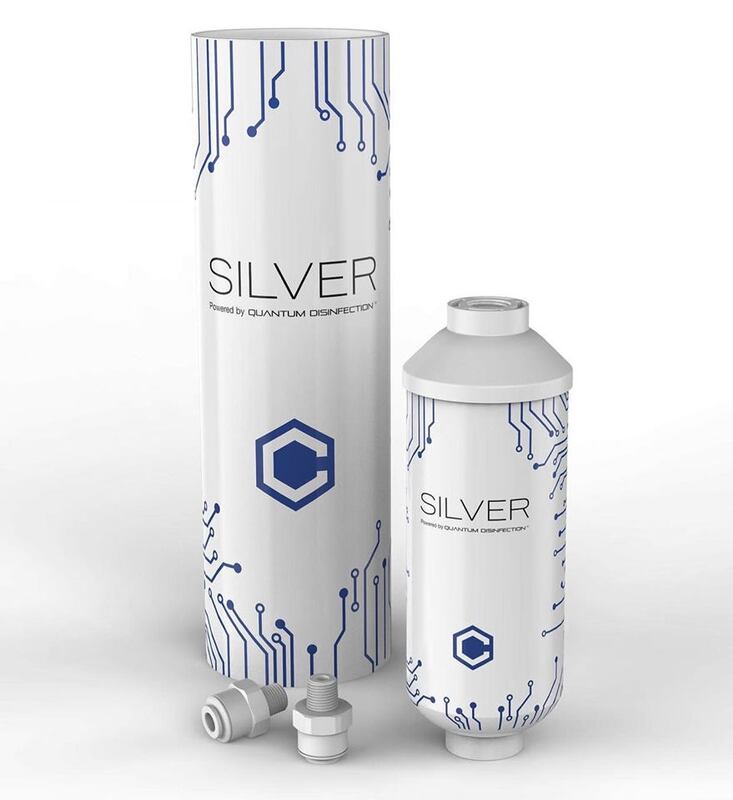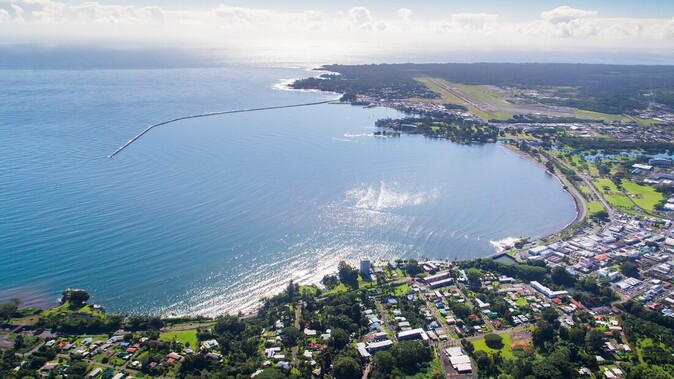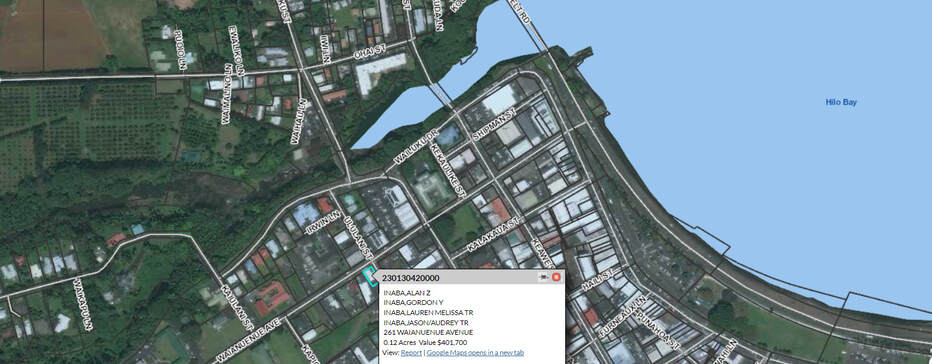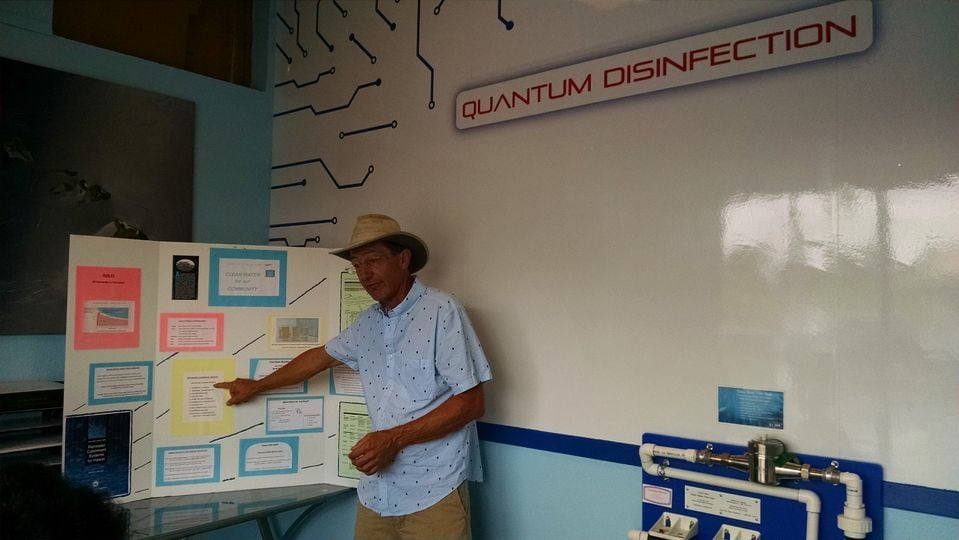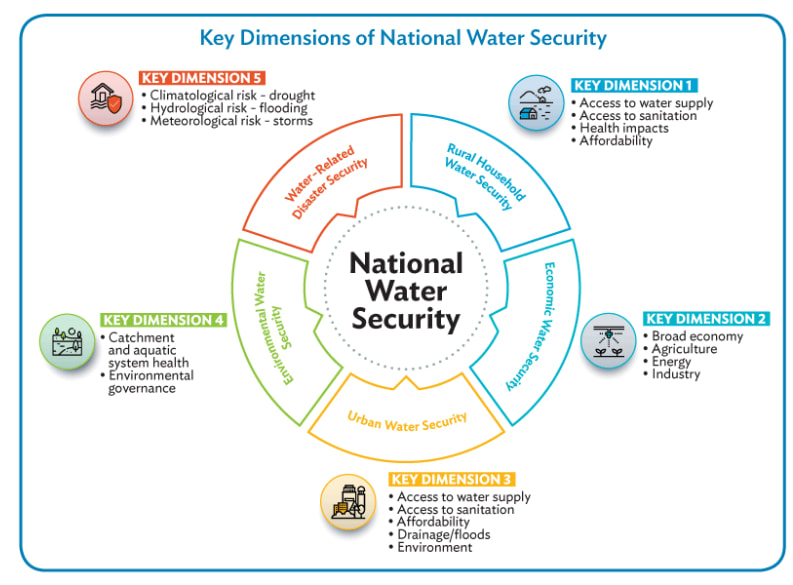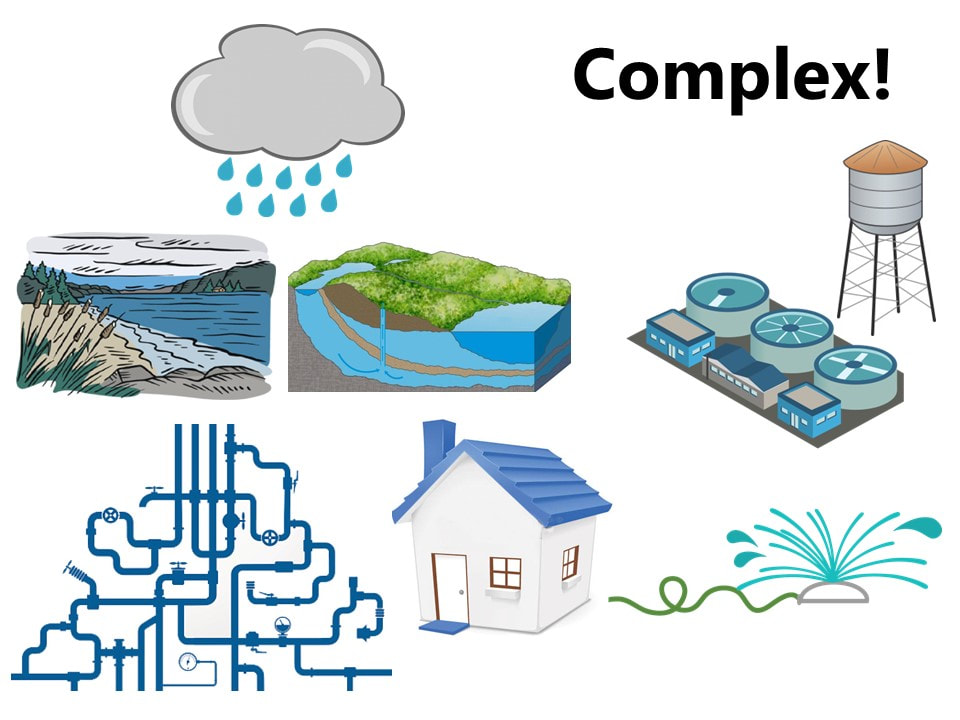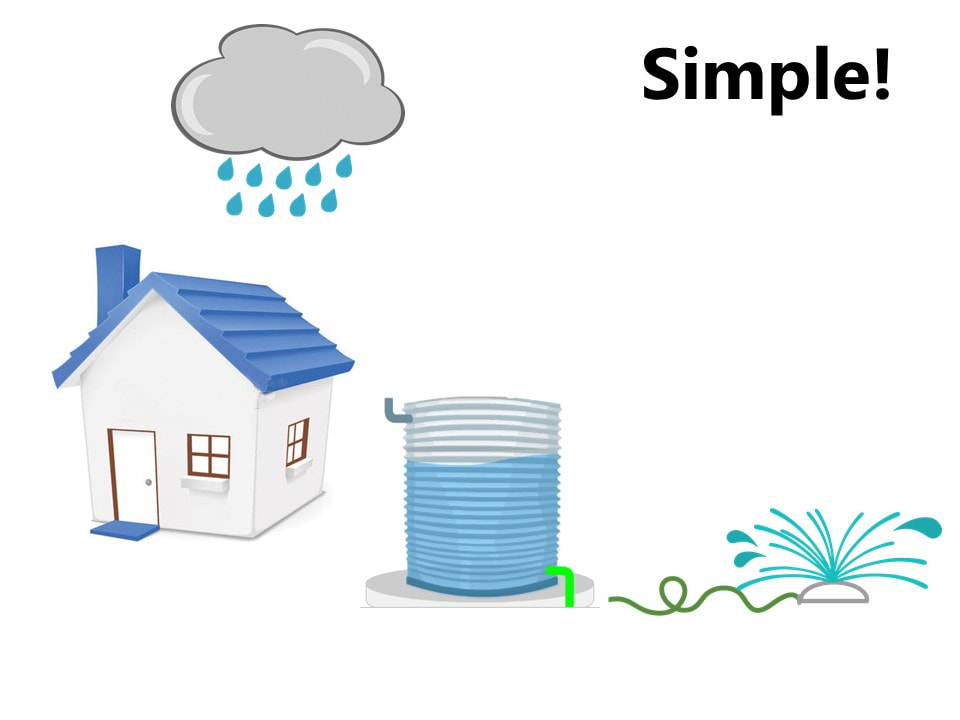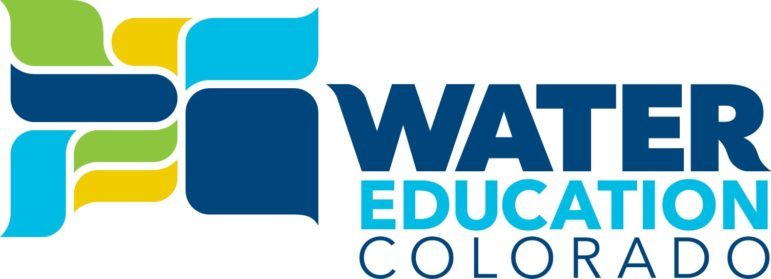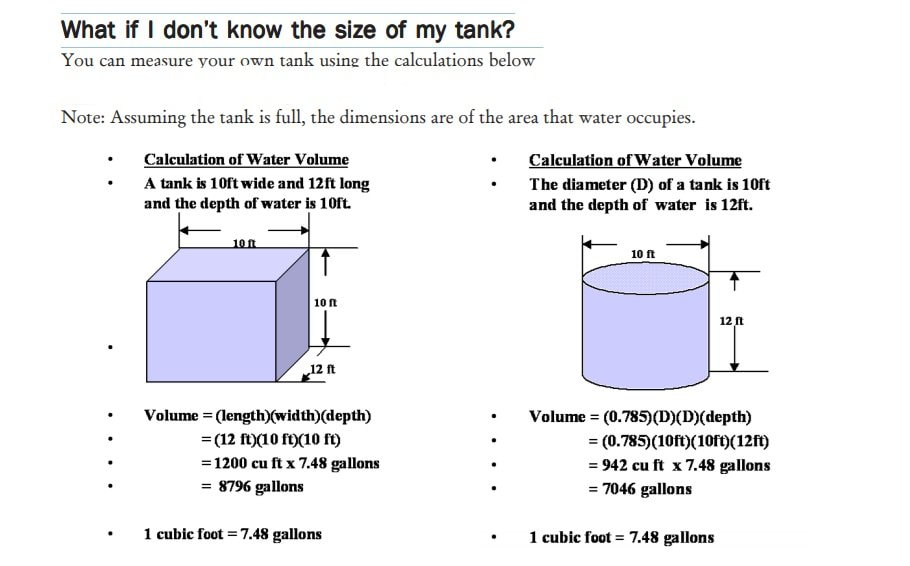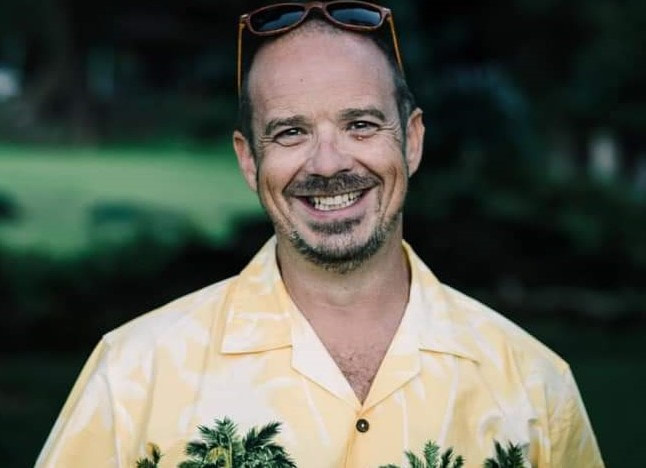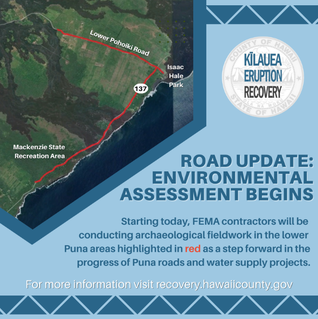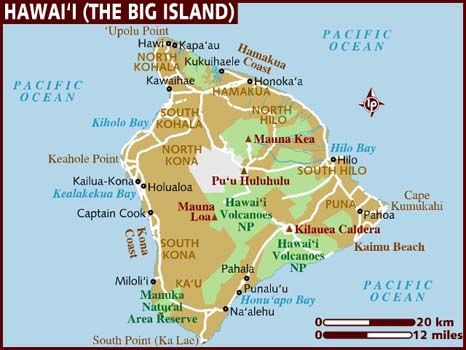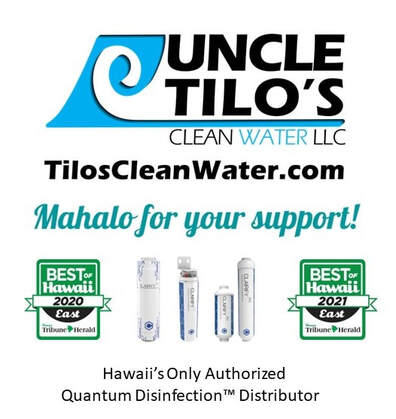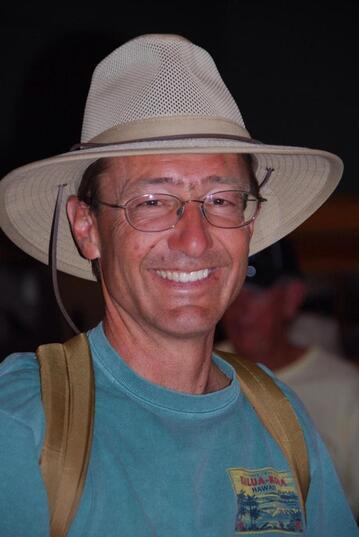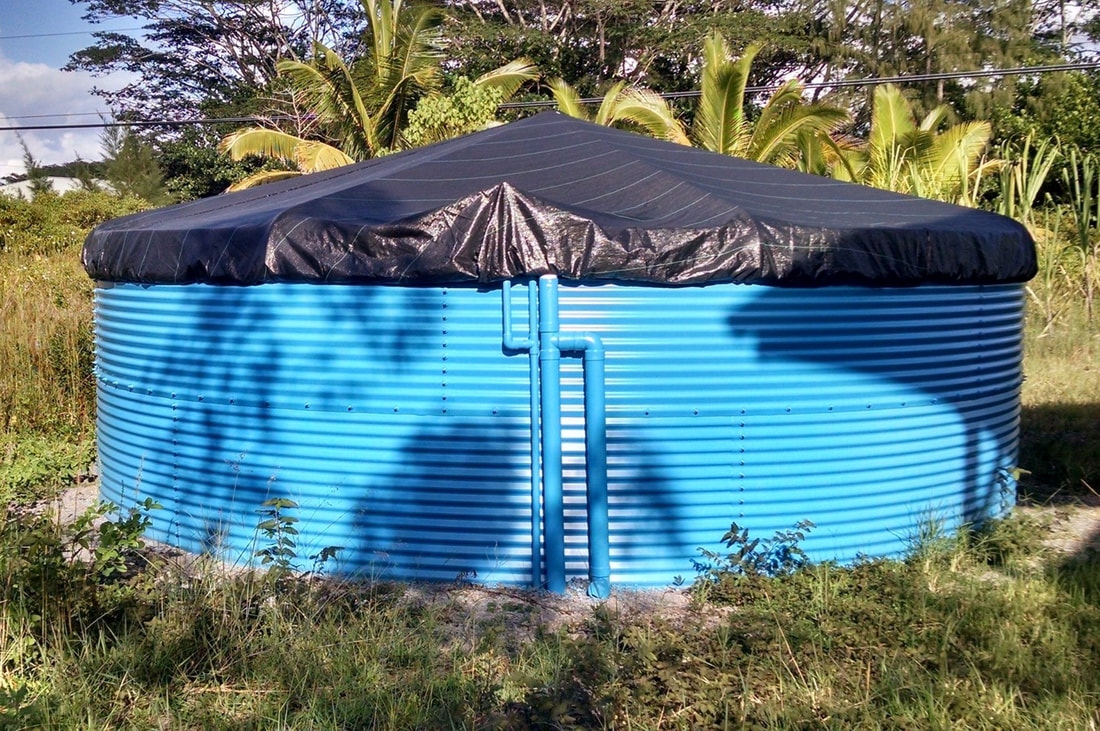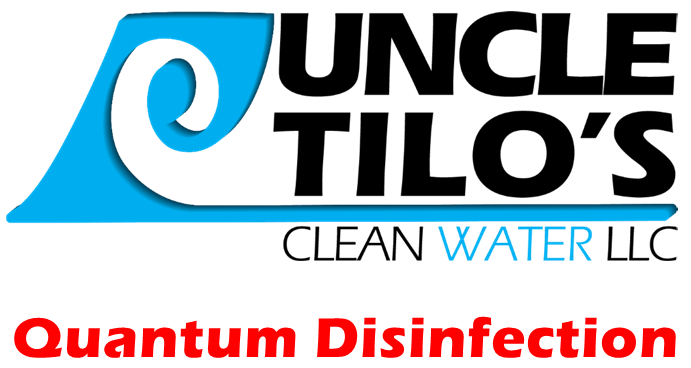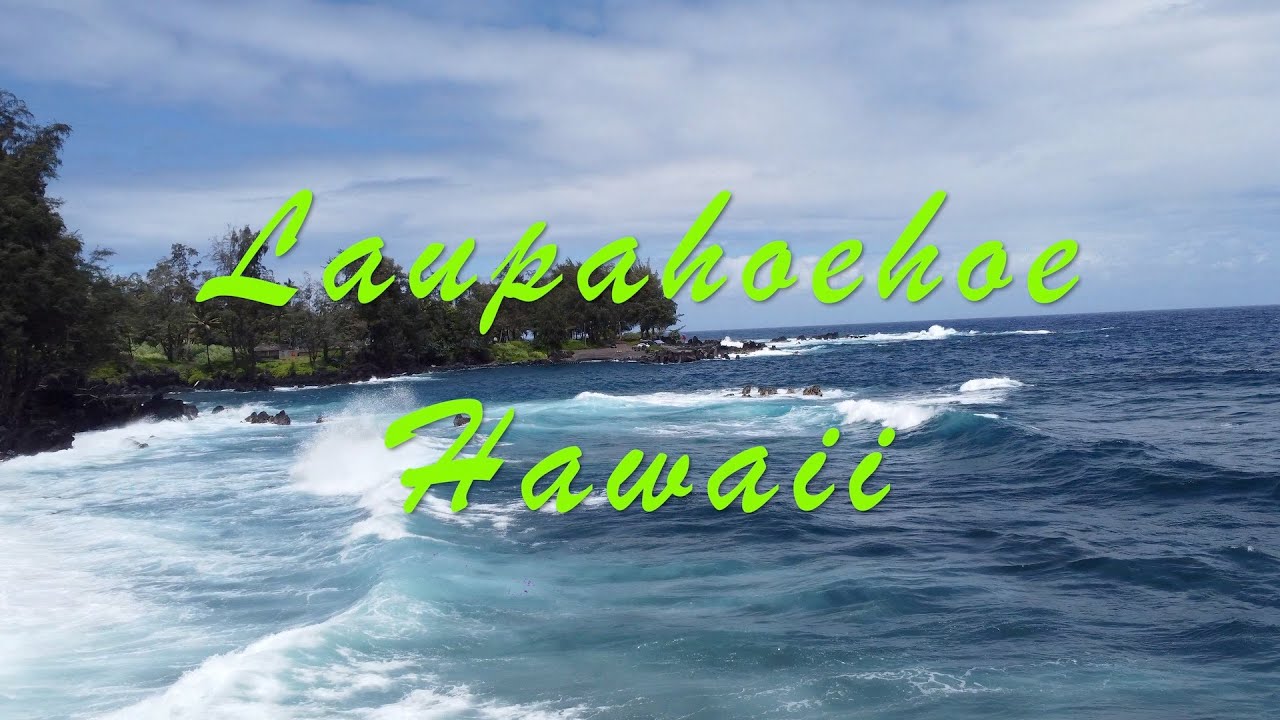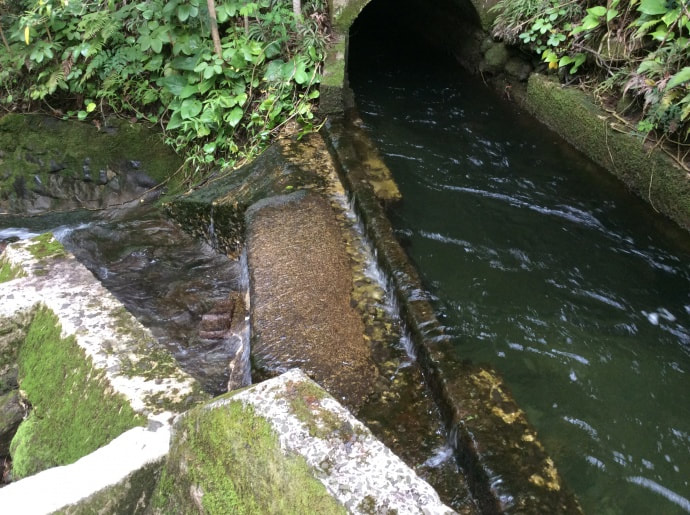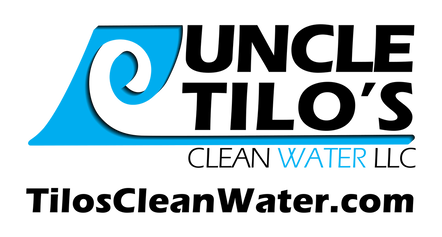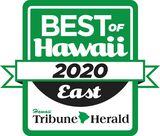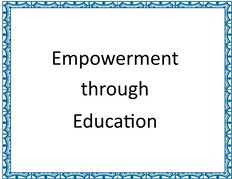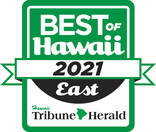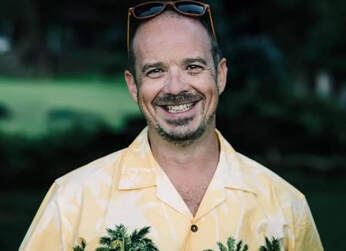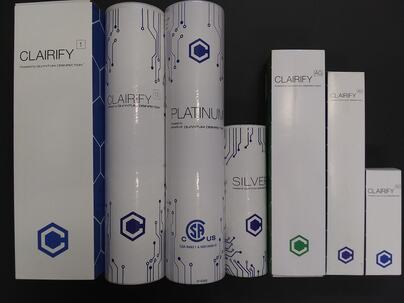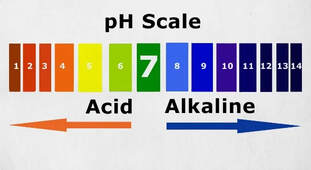Sierra Club of Hawai'i |
Event: Wastewater discharge |
Affected waterbody: Hilo Bay
Warning signs have been posted.
The public is advised to stay out of the affected waters
until warning signs have been removed.
It's time to upgrade to Quantum!
Bring your old UV bulb to Uncle Tilo's Clean Water Education Class Saturday, August 6, 2022 and upgrade to Quantum and received $100.00 off Quantum's Platinum and Flow Meter package.
Offer good only Saturday, August 6, 2022. 10am to 12pm
No Power Required * No More Mercury * Environmentally Friendly
Cost Effective * Kills Pathogens * Clean Water = Healthy Body *
Remember to recycle your UV bulbs they have mercury in them!
Household Hazardous Waste Collection Event - Hilo
Waiākea High School Student Parking Lot (B)
155 W. Kāwili Street, Hilo, HI 96720
August 6, 2022 from 7:30 am – 2:30 pm
https://www.hawaiizerowaste.org/events/household-hazardous-waste-collection-event-hilo-2022-08-06/?mc_id=1413
According to Hawaii Department of Health,
Leptospirosis is circulating in Hawaii.
Don’t swim in fresh water with an open cut in Hawaii.
Have you ever heard of Leptospirosis? It’s a bacterial disease that impacts humans and animals in Hawaii.
The disease occurs all over the world but is most common in warm climates. Symptoms include fever, chills, headache, muscle pain, sweating, vomiting and pain behind the eyes.
Symptoms may last from a few days to several weeks. Although most cases are mild, some can be severe, causing acute liver and kidney failure. You can get Leptospirosis by swimming or wading in freshwater puddles, ponds or streams contaminated with animal urine or coming into contact with wet soil or plants contaminated with animal urine.
The bacteria will enter the body through broken skin or through the soft tissues of the inside of the mouth, nose, or eyes. Leptospirosis is not spread from person to person.
While hiking to waterfalls in Hawaii you may notice signs warning people about this disease.
According to Hawaii Department of Health, Leptospirosis is circulating in Hawaii. It is estimated that 100-200 cases of the disease are identified annually in the United States and approximately 50% of these cases occur in Hawaii.
If you have symptoms of Leptospirosis and were exposed to infected water, it’s best to call your healthcare provider and ask for a blood test to determine if you have been infected.
You can avoid getting Leptospirosis by not getting in fresh water, ponds or streams in Hawaii especially if they have Leptospirosis signs nearby when you have an open cut or sores.
Tips to avoid getting Leptospirosis
- Do not swim or wade in any freshwater streams or ponds in Hawaii, especially when you have open cuts or sores.
- Swimming with your head underwater also increases your risk of infection through the eyes, nose, and mouth.
- Do not drink pond or stream water without boiling or chemically treating it.
- Wear gloves when disposing of dead animals and when gutting (cleaning) livestock or game animals.
- Vaccinate farm animals and pets.
by: Kaile Hunt, KHON2NEWS
Posted: Jul 26, 2022
Posted: Jul 26, 2022
Know your choices in Water Disinfection
with Quantum Disinfection by Claire Technology
As the only authorized distributor in Hawai'i
Uncle Tilo's Clean Water LLC carries the full product line
We've spent the last four years bringing you breakthrough research and education so you can make smart, healthy decisions with your water source.
Learn more about us and the work we do to keep you and your family safe:
https://www.tiloscleanwater.com/community-involvement.html
The pubic is advised to stay out of waters of Hilo Bay
The pubic is advised to stay out of waters of Hilo Bay
due to a wastewater discharge at 261 Waianuenue Avenue.
An estimated 3,000 gallons entered a nearby storm drain
which empties into Hilo Bay.
Warning signs will be posted.
| Event: Wastewater discharge Location: 261 Waianuenue Ave, Hilo Status: Ongoing as of 5:30 PM, July 4, 2022 Estimated volume: 3,000 gallons Affected waterbody: Hilo Bay |
The public is advised to remain out of the affected waters until warning signs have been removed.
According to County records this building was purchased 03/01/22.
Commercial Improvement Information
Improvement Name: GASTROENTEROLOGY INC
Gastroenterology is the study of the normal function and diseases of the esophagus, stomach, small intestine, colon and rectum, pancreas, gallbladder, bile ducts and liver.
Uncle Tilo has hosted
50+ Clean Water Classes to our island community **Free**
We’ve spent the last four years bringing you breakthrough research and education so you can make smart, healthy decisions with your water .
Learn more about us and the work we do to keep you and your family safe.
https://www.tiloscleanwater.com/community-involvement.html
RAINWATER HARVESTING IS VITAL FOR THE
FUTURE OF SUSTAINABLE WATER RESOURCES
Personal Water Security Begins With
Rainwater Harvesters
Rainwater Harvesters are part of the solution!
THE WATER CONSERVATION BENEFITS OF RAINWATER HARVESTING
Rainwater harvesting has many benefits but the main one is that it is a sustainable water management practice that can be implemented by anyone on many different levels, from a simple rain barrel to a
comprehensive rainwater harvesting system that integrates with an irrigation system or household plumbing.
When you think about it… do we need to use municipally treated water to sprinkle on our lawns and landscaping?
Definitely not! Harvested rainwater is the perfect candidate for irrigation use in addition to so many other water uses.
By using rainwater harvesting systems to supply water for some,
or all of our water needs, you can reduce our dependence on municipally treated water.
Overall, rainwater harvesting is viewed as a practice that is socially acceptable and
environmentally responsible all the while, promoting self-sufficiency.
comprehensive rainwater harvesting system that integrates with an irrigation system or household plumbing.
When you think about it… do we need to use municipally treated water to sprinkle on our lawns and landscaping?
Definitely not! Harvested rainwater is the perfect candidate for irrigation use in addition to so many other water uses.
By using rainwater harvesting systems to supply water for some,
or all of our water needs, you can reduce our dependence on municipally treated water.
Overall, rainwater harvesting is viewed as a practice that is socially acceptable and
environmentally responsible all the while, promoting self-sufficiency.
THE ENVIRONMENTAL BENEFITS OF RAINWATER HARVESTING
- The rainwater that falls on your roof and property is essentially free. All it takes is a method to harvest it into a tank or cistern for later use.
- Rainwater harvesting can be a great educational tool to get people to recognize their individual or household water usage. This can get them to start conserving water in other areas around their home.
- For communities that rely on imported water to supply their needs, collecting rainwater that falls naturally in the community can reduce the need for imported water.
- Rainwater harvesting helps utilities reduce peak demands during summer months, saving treated water for more important and appropriate water uses.
- While rainwater can be a perfect primary water source for many uses and situations, it is also a great backup water supply for emergency situations.
THE WATER-ENERGY BENEFITS OF RAINWATER HARVESTING
While the logical use of rainwater harvesting is for water conservation purposes, it also reduces energy use within a community.
- Typically, the end use of the rainwater is located on the property where the rainwater is collected. Replacing municipal water use at a home and property with rainwater reduces the amount of water that a municipality has to treat and then pump to your house. The treatment and pumping of municipally provided water require a lot of energy.
- The implementation of rainwater harvesting can help meet new standards of energy and water efficiency ratings and codes that are being developed in communities.
THE ECONOMIC BENEFITS OF RAINWATER HARVESTING
Collecting and using rainwater to replace municipal water use reduces your water bill
- Reducing municipal water use for areas such as irrigation reduces the amount of water that a municipality has to treat and pump. This, in turn, reduces water service cost to a municipality.
- The widespread implementation of rainwater harvesting within a municipality’s service area can reduce the long-term water development needs of a city, allowing the city to use their existing water infrastructure investments more efficiently. The cost to the community to supply treated water is becoming more expensive every year. The cost to construct dams, pipes, and treatment plants, not to mention the cost of maintenance and infrastructure replacement is huge. As water users, the rate-payers in the community ultimately will foot this rising bill. Therefore, the practice of rainwater harvesting can reduce water demand and thus allow municipalities to provide potable water service at a lower cost.
- Designing and installing rainwater collection systems can provide sustainable jobs for the economy of the future. The rainwater harvesting industry can become a leading employer in the green infrastructure movement. If you want to work send you resume and cover letter to Uncle.Tilo@gmail.com
- Rainwater stored onsite in a rainwater harvesting system can be available for wildfires and help protect the house and property. Insurance companies can offer discounts for storing water onsite for
THE ANCILLARY BENEFITS OF RAINWATER HARVESTING
Rainwater can be used for irrigation use, indoor non-potable water use, and/or potable water supply.
- Rainwater harvesting can provide an independent water source in areas where other water sources are unavailable, or the water quality is unacceptable, or they are too expensive to develop, or they are too difficult to obtain.
- If used as a potable water source, the zero hardness of rainwater provides many advantages. It eliminates the scale build-up in household appliances that could occur with the use of other water sources. This will extend the life of the appliances. In addition, it reduces the amount of detergent or soaps needed in laundry and dishwashing appliances, reducing money spent on these detergents and soaps.
- Rainwater from a potable rainwater harvesting system that has been properly filtered and disinfected is some of the best tasting water available. It doesn’t have the many chemicals that municipally treated water has such as fluoride or chloramines (chlorine).
RAINWATER HARVESTING IS THE KEY TO
FUTURE WATER CONSERVATION GAINS
Ever since the US government enacted national standards in the U.S. Energy Policy Act of 1992 and set minimum efficiency standards for all toilets, showers, urinals and faucets manufactured in the United States, the opportunities for indoor water conservation has decreased. During this time, outdoor water use efficiency standards have somewhat been neglected. Therefore, rainwater harvesting provides a tremendous opportunity to achieve more water conservation gains at each and every residential and commercial property.
RAINWATER HARVESTING IS VITAL FOR THE
FUTURE OF SUSTAINABLE WATER RESOURCES
As you can see from the benefits and advantages listed above, the practice of rainwater harvesting is an important and vital part of developing a sustainable water resource path for any community. As local water resources are stretched to provide for population growth and economic development, new water supply strategies and paradigms will be necessary to meet this demand. Rainwater harvesting is an untapped resource that could be developed quickly within communities and that will also have a tremendous impact. Rainwater harvesting is part of a sustainable water supply strategy for local communities.
If you got this far reading this . . .
YOU'RE awaking to the knowledge
Clean Water creates thriving populations around the world
Mahalo Denver for hosting Clean Water incentives!
Everyone Everywhere is Paying Attention
to the quality of their water.
Everyone Everywhere is Paying Attention
to the quality of their water.
It's no secret, the quality of your water is a
direct link to the quality of your health.
EWG's Tap Water Database
Since 2013, water utilities' testing has found pollutants in Americans' tap water. According to an EWG drinking water quality analysis of more than
31 million state water records.
We entered 96749
Here's What We Got
To know how much disinfection and baking soda to add
you must know the size of your tank and how much water is in it.
Helpful Tips for Monthly Maintenance
https://www.tiloscleanwater.com/catchment-maintenance-101.html
https://www.tiloscleanwater.com/catchment-maintenance-101.html
This notice is to inform our clients and community Roger Collier is no longer affiliated with Uncle Tilo’s Clean Water LLC in any capacity. Roger Collier had access to our client list and sensitive confidential information before leaving without notice Friday, June 10, 2022.
Progress is moving forward with roadway improvement projects along lower Pohoiki Road and Highway 137 near McKenzie State Recreation Area in red.
FEMA contractors (accompanied by DPW surveyors) will conduct archaeological fieldwork starting today, June 6, 2022.
This work is part of the environmental assessment which began in January 2022
for the planned road and waterline restoration projects in the area.
Water Restriction Notice Issued for North Kona Effective immediately
The Department of Water Supply (DWS), County of Hawai‘i
has implemented a mandatory 25 percent Water Restriction
for customers in the following areas:
MAKALEI, KALAOA, KONA PALISADES, KEĀHOLE, PALAMANUI, KOHANAIKI, KALOKO, KALOKO MAUKA, HUALĀLAI; NORTH KONA, HAWAI‘I
Water restriction measures are needed due to the failure of Hualālai Deepwell on Monday.
Meanwhile, the following areas in North Kona remain under a water conservation notice that calls for a voluntary 10 percent reduction in water use: KAHALU‘U, KEAUHOU, KAILUA-KONA, HONOKŌHAU, KEALAKEHE, KEAHUOLŪ, KEŌPŪ, HŌLUALOA, WAI‘AHA.
The 25% Water Restriction will preserve adequate water supplies and pressure to meet the community’s drinking, cooking and hygiene needs. DWS will continue monitoring the water system and make necessary adjustments. You will be kept informed of any changes in water supplies.
Please use water wisely and sparingly. Customers should refrain from irrigation, washing cars, and other unnecessary water uses while the water restriction is in effect. Taking short showers, hand-washing dishes, fixing leaky toilets and turning off the faucet while brushing teeth are easy ways to reduce water use.
DWS has approved expedited purchase of replacement parts in efforts to return the Hualālai Deepwell back to service.
DWS stresses that water quality is not threatened by the loss of the well. Customers’ water remains safe to consume and continues to meet or exceed federal drinking water regulations. Water filtration, boiling and other home purification practices are unnecessary.
For more water conservation tips, please visit www.hawaiidws.org, call 961-8050 during normal business hours or email dws@hawaiidws.org. Please call 961-8790 to report after-hours emergencies.
Mahalo for your cooperation and understanding while this temporary use restriction is in effect.
Hurry, place your vote before Friday, June 17, 2022
Tribune Herald is hosting Best of Best - East Hawai’i 2022
Yep, it’s that time again... and we need your help!
Tribune Herald's Best of Best series starts with nominations from Tribune Herald readers. There are several categories.
How you can help?…by voting for Uncle Tilo’s Clean Water LLC under Best of Pool Spa Catchment Equipment.
Your ballot could win you $500. in Cold Hard Cash!
How you can help?…by voting for Uncle Tilo’s Clean Water LLC under Best of Pool Spa Catchment Equipment.
Your ballot could win you $500. in Cold Hard Cash!
Empowerment through Education is our community service
| We celebrate 60+ Clean Water classes free to our communities. We are certified educators for Project WET, Water Partner Collaborators & members of ARCSA. Quality of water = quality of health. It's that simple. Hurry, place your vote before Friday, June 17 here: https://www.hawaiitribune-herald.com/best-of-east-hawaii... Mahalo for supporting Clean Water! Uncle Tilo and Staff TilosCleanWater.com |
This is the Department of Water message for Friday, May 27, 2022
The Department of Water Supply (DWS), County of Hawai‘i, has
issued an immediate water restriction request for the affected area until further notice. Due to equipment malfunctions, DWS will need to haul all drinking water to meet customers’ water needs. We are asking residents and businesses to reduce water use by 25 percent to ensure everyone’s water needs are met.
issued an immediate water restriction request for the affected area until further notice. Due to equipment malfunctions, DWS will need to haul all drinking water to meet customers’ water needs. We are asking residents and businesses to reduce water use by 25 percent to ensure everyone’s water needs are met.
Performing the following steps will help to conserve water by 25 percent:
• Wash only full loads of laundry and dishes.
• Check faucets and pipes for leaks.
• Do not let water run when washing hands, shaving, and brushing teeth.
• Reduce showering times.
• Use water-saving devices whenever possible.
• Use a broom instead of a water hose when gathering leaves and grass clippings.
• Wash only full loads of laundry and dishes.
• Check faucets and pipes for leaks.
• Do not let water run when washing hands, shaving, and brushing teeth.
• Reduce showering times.
• Use water-saving devices whenever possible.
• Use a broom instead of a water hose when gathering leaves and grass clippings.
Please call (808) 961-8050 during normal business hours, (808) 961-8790 for after-hour
emergencies, or email: dws@hawaiidws.org.
emergencies, or email: dws@hawaiidws.org.
Updates will be issued as necessary and may be viewed at www.hawaiidws.org.
Longtime effort by local government to buy Wailuku Water Co.’s water delivery system seems to have dried up.
Wailuku Water Company tunnel. Courtesy photo.
Na Wai ‘Eha — or the “Four Great Waters” of Waiheʻe River, Waiehu Stream, Wailuku River and Waikapū Stream — provides about 70% of county drinking water to Maui residents, much of which is delivered via Wailuku Water Co.’s water system.
For years, the possible acquisition signaled hope that a private, plantation-era system could be transformed into a public utility.
The sale could have been a historic move, setting the stage for more complicated water delivery systems to be acquired and managed by local government.
On Thursday, though, Maui County Managing Director Sandy Baz said an official county offer of $1.5 million for the water delivery system was rejected by Wailuku Water Co.
And while money is allocated for the acquisition in this year’s budget, no money has been set aside for the next fiscal year, added Baz, who spoke during Thursday’s county Board of Water Supply meeting.
“If Trust for Public Land can acquire then transfer to us, that’s one of the best options moving forward at this point,” Baz said.
However, Wailuku Water Co. President Avery Chumbley said the county didn’t have enough focus or will to make the deal happen.
“They offered a low-ball price then asked for one-third of the offer to be reduced based on improvements they thought needed to be done,” he told Maui Now. “Get serious, you guys.”
“I would still be willing to sell it to them,” Chumbley added. “But they have to be focused and willing to do a transaction that works for both parties.” The company was in talks with nonprofit Trust For Public Lands and state Department of Land and Natural Resources Division of Forestry and Wildlife officials for several months, trying to find a deal where the state would buy the watershed lands and the county would take over the water system, Chumbley said.
“The county just never really put together a team or made an investment of time and focus to this issue,” he said. “They would say, ‘Yeah, we want to buy it, we want to do it,’ and nothing would happen.” Pointing to losses, Wailuku Water Co. has sought for about two decades to sell its water delivery system, along with nearly 9,000 acres of Na Wai ‘Eha watershed land.
Under the Arakawa administration, the county had considered buying the company’s assets, including the water delivery system and the land, for $9.5 million.
Over the years, the state had mulled purchasing just the watershed land. Money was appropriated, then it evaporated when the acquisition didn’t go through. All the while, the integrity of the system has been questioned, and county officials have said they hesitate to buy — sight-unseen — an old, complicated system. Chumbley at various meetings has countered those claims, saying that the system is reliable and functional, but just needs improvements to bring it to a 21st century standard.
Meanwhile, Hui o Na Wai ‘Eha, a local nonprofit that advocates for the protection of the four waterways, has supported the sale.
Hui president Hōkūao Pellegrino said Thursday that the group still backs the county and/or state acquisition of Wailuku Water Co. But the fact that the possible sale has stalled over three administrations is “super disappointing,” he added.
“It’s as if there is no political will anymore,” Pellegrino said in a text. Baz said the county still backs public acquisition of Wailuku Water Co.’s system.
“We’re still hopeful that an agreement can be made and still believe it’s in the best interest of our community to have this be in the public’s hands,” he told Maui Now.
For years, the possible acquisition signaled hope that a private, plantation-era system could be transformed into a public utility.
The sale could have been a historic move, setting the stage for more complicated water delivery systems to be acquired and managed by local government.
On Thursday, though, Maui County Managing Director Sandy Baz said an official county offer of $1.5 million for the water delivery system was rejected by Wailuku Water Co.
And while money is allocated for the acquisition in this year’s budget, no money has been set aside for the next fiscal year, added Baz, who spoke during Thursday’s county Board of Water Supply meeting.
“If Trust for Public Land can acquire then transfer to us, that’s one of the best options moving forward at this point,” Baz said.
However, Wailuku Water Co. President Avery Chumbley said the county didn’t have enough focus or will to make the deal happen.
“They offered a low-ball price then asked for one-third of the offer to be reduced based on improvements they thought needed to be done,” he told Maui Now. “Get serious, you guys.”
“I would still be willing to sell it to them,” Chumbley added. “But they have to be focused and willing to do a transaction that works for both parties.” The company was in talks with nonprofit Trust For Public Lands and state Department of Land and Natural Resources Division of Forestry and Wildlife officials for several months, trying to find a deal where the state would buy the watershed lands and the county would take over the water system, Chumbley said.
“The county just never really put together a team or made an investment of time and focus to this issue,” he said. “They would say, ‘Yeah, we want to buy it, we want to do it,’ and nothing would happen.” Pointing to losses, Wailuku Water Co. has sought for about two decades to sell its water delivery system, along with nearly 9,000 acres of Na Wai ‘Eha watershed land.
Under the Arakawa administration, the county had considered buying the company’s assets, including the water delivery system and the land, for $9.5 million.
Over the years, the state had mulled purchasing just the watershed land. Money was appropriated, then it evaporated when the acquisition didn’t go through. All the while, the integrity of the system has been questioned, and county officials have said they hesitate to buy — sight-unseen — an old, complicated system. Chumbley at various meetings has countered those claims, saying that the system is reliable and functional, but just needs improvements to bring it to a 21st century standard.
Meanwhile, Hui o Na Wai ‘Eha, a local nonprofit that advocates for the protection of the four waterways, has supported the sale.
Hui president Hōkūao Pellegrino said Thursday that the group still backs the county and/or state acquisition of Wailuku Water Co. But the fact that the possible sale has stalled over three administrations is “super disappointing,” he added.
“It’s as if there is no political will anymore,” Pellegrino said in a text. Baz said the county still backs public acquisition of Wailuku Water Co.’s system.
“We’re still hopeful that an agreement can be made and still believe it’s in the best interest of our community to have this be in the public’s hands,” he told Maui Now.
By Kehaulani Cerizo
May 20, 2022
May 20, 2022
Store Hours
Monday - Thursday 10am - 6pm
Friday 9am - 2pm
First Saturday Water Education
10am - 12pm
Bring a Lawn Chair!
Roger Collier, Storefront Manager
After being born in Oregon and raised to be socially conscious as a steward of the planet, environmentalist, greenhouse grower and engineer, Roger traveled the globe educating at seminars, tradeshows and conferences about Hydroponics, Indoor and Controlled Environment Agriculture in the 90’s and 00’s. While in the Hydroponics industry, he had the opportunity to design and manufacture Environmental Controls for Greenhouses, along with introducing the first OMRI Certified, Vegan Organic plant supplements to the Hydroponics market.
Roger was asked to move to Hawaii in 2014 to set up a STEM Education (Science, Technology, Engineering and Math) and Robotics lab for the keiki on Maui. This was the first time Roger was introduced to rainwater catchment and the challenges people had to source clean, pure, disinfected water. 2020 invited Roger to the big island of Hawai’i and to start his education in Rainwater Harvesting. With the introduction to Uncle Tilo, Archer and Uncle Tilo’s Clean Water LLC, Roger has found his passion for Clean Water and calling to educate about Rain Harvesting and Clean Water. He could not be happier to be a part of the team and looks forward to many years with uncle Tilo’s Clean Water LLC.
Did you know...
U of H has printed material that quotes, “Class B UV lights operate at a lower intensity and are made for treated water, such as county or city water.”
U of H has printed material that quotes, “Class B UV lights operate at a lower intensity and are made for treated water, such as county or city water.”
Did you know...
Uncle Tilo’s Clean Water LLC in the Pahoa Marketplace is the only authorized distributor for Quantum Disinfection in Hawai’i?
Uncle Tilo’s Clean Water LLC in the Pahoa Marketplace is the only authorized distributor for Quantum Disinfection in Hawai’i?
Did you know...
As Hawaii's authorized distributor Uncle Tilo’s Clean Water LLC carries the full product line for all water applications.
As Hawaii's authorized distributor Uncle Tilo’s Clean Water LLC carries the full product line for all water applications.
Here's how Quantum works:
https://www.tiloscleanwater.com/quantum-disinfection.html
https://www.tiloscleanwater.com/quantum-disinfection.html
After all, the quality of your water is a direct link to the quality of your health.
In addition to its effects on biological and chemical processes, the variability of pH affects our decisions in rainwater catchment and domestic water usage. High-pH water often tastes bitter and may be an indication of the scaling potential of the water. Low-pH water may lead to the dissolution of pipes, particularly copper pipes and will release lead in the water through brass fittings. The EPA classifies pH under unregulated Secondary Drinking Water Standards and recommends a range between 6.5 and 8.5 pH units.
The term "pH" refers to the potential of hydrogen. The scale measures the logarithmic concentration of hydrogen ions (H+) and hydroxyl ions (OH-), which constitute H2O. Because the scale is logarithmic, a change in pH by a factor of 10 results in a change of one unit on the pH scale - the pH scale ranges from 0 to 14 and is a measure of the acidity/basicity of water. A neutral solution, with a pH of 7.0, is achieved when the activity ofH+ and OH- is balanced. Water that has more free hydrogen ions (over 7) is acidic and water that has more free hydroxyl ions (less than 7) is basic or alkaline. Acids lower the pH of a solution and bases raise the pH.
Well water is typically high in ions (both positive cations and negative anions) such as calcium and magnesium (the "hardness" minerals), sodium, potassium, nitrate, chloride and sulfate. The presence of these ions decreases the activity of the H + ion and increases the activity of the OH- ions, causing the water to be higher pH. Well-water pH is a function of the minerals taken into solution as the water moves through rock strata.
The term "alkaline" should not be confused with the term "alkalinity;' which refers to the "buffering" capacity of water, or its ability to resist or "buffer" changes that would make the water more acidic. The main sources of natural alkalinity, which limits swings in pH levels, are rocks containing carbonate, bicarbonate, and hydroxide compounds. Borates, silicates, and phosphates may also contribute to alkalinity.
If you are adding baking soda to your tank once a month that’s great, except when the tank is full and it rains several inches that water is replenished with new rain and the baking soda goes out in the replenishing process.
Solution: By adding Uncle Tilo’s Acid Rain Mineral Pack to your tank you are ensured to have minerals always. The Acid Rain Mineral Pack consist of CaCo3 – Calcite & Mg02 Corosex. Both rainwater systems and our bodies need these minerals.
